
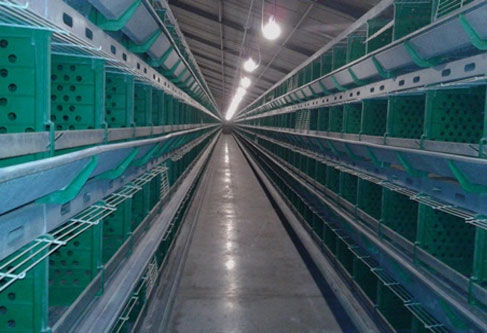
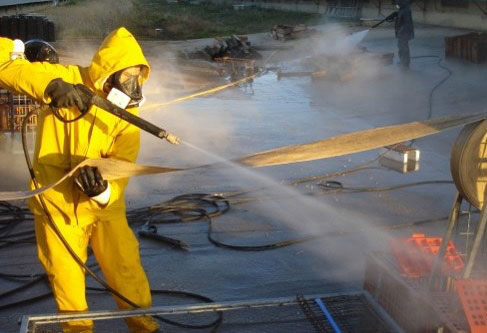
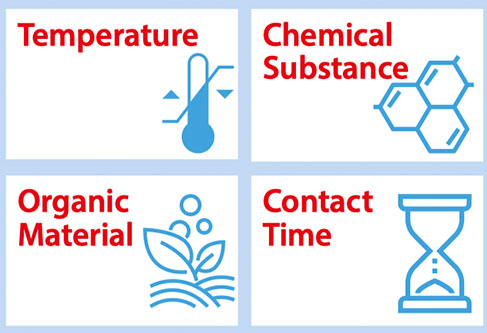
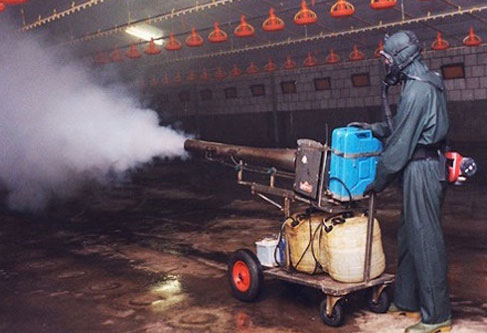

Cleaning and disinfection procedures are key to preventing pathogens from passing from one flock to the next. They also prevent pathogens from challenging birds in their early life. The goal of this procedure is to minimize all microorganisms in the house to older chicks the best opportunity to achieve optimum performance.
Table 1: Clean and disinfection microbiological results
An adequate stocking density leads to success in rearing chicks. A high stocking density impacts negatively on daily growth, flock uniformity and chick development.Furthermore, a high stocking density combined with reduced feeder space will limit feed consumption, which might already be low under certain conditions (e.g. hot climate or poor feed quality,) and sufficient access to water.
Table 2: Stocking density in rearing farms
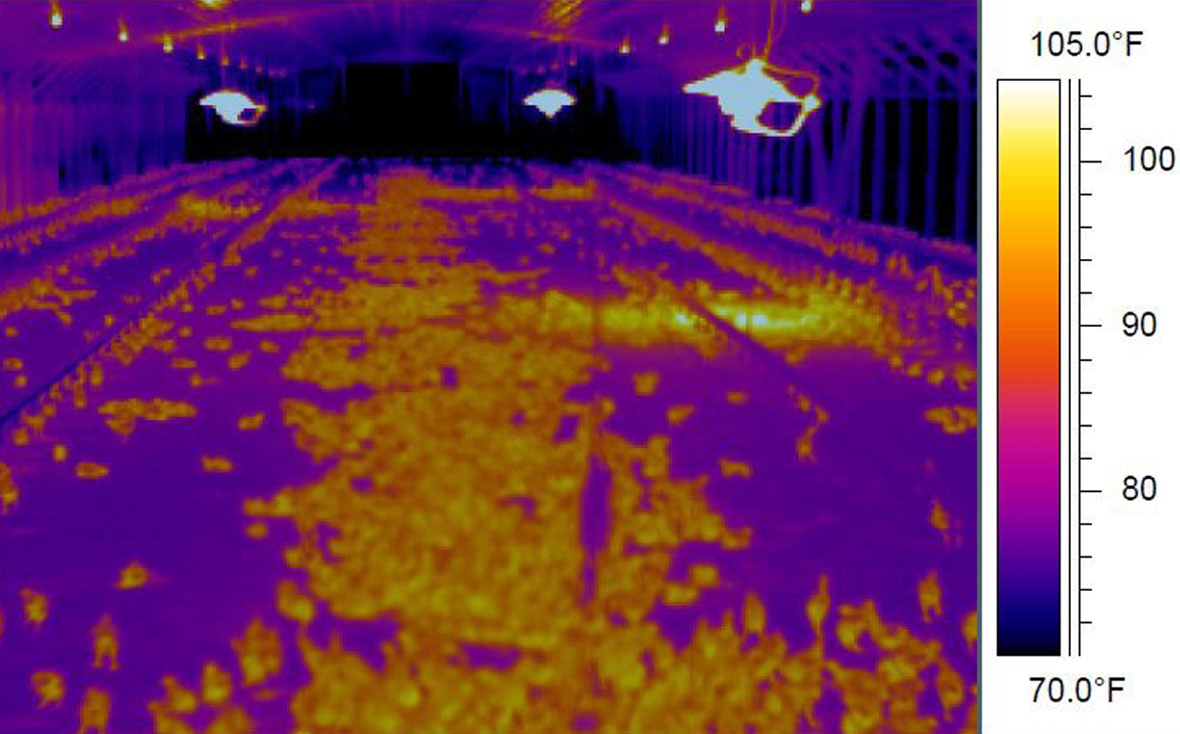
Old litter from the previous flock should not be used. Using old litter increases the pressure of disease and may cause increased chick morbidity or mortality. Insoluble grit should be fed if the chicks are on a type of (e.g. shavings) that will be eaten by the chicks.
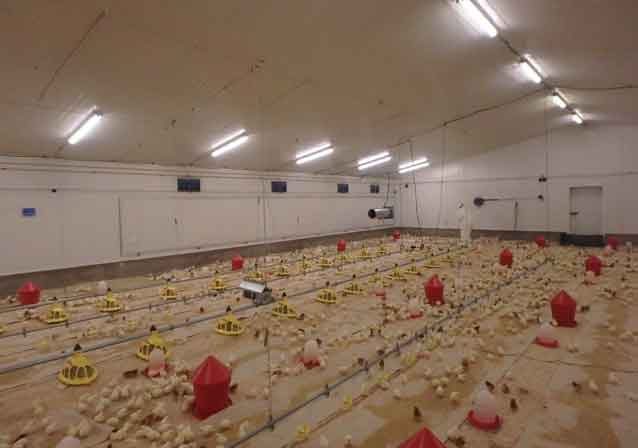

Supplemental feeder trays should be provided within the brooder ring for a few days until all chicks are eating from the regular feeding system. Ensure adequate feeder space is provided. Cover at least 50 % of the brooding area with paper and starter feed over the paper.

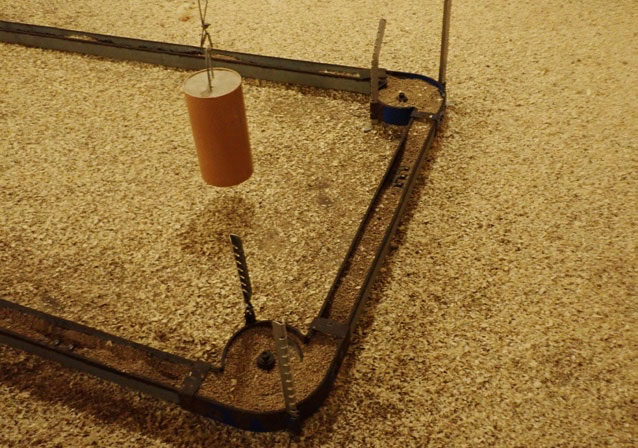
Chicks must have unlimited access to clean and fresh water (20 – 25 °C). During the first days, cups or nipples should be checked and triggered several times per day to stimulate the chicks to drink. Supply additional drinkers which can be easily accessed until the chicks are drinking from the regular water system.
If using nipple drinkers, reduce the water pressure for a few days. This allows droplets to develop which help stimulate the chicks to drink.
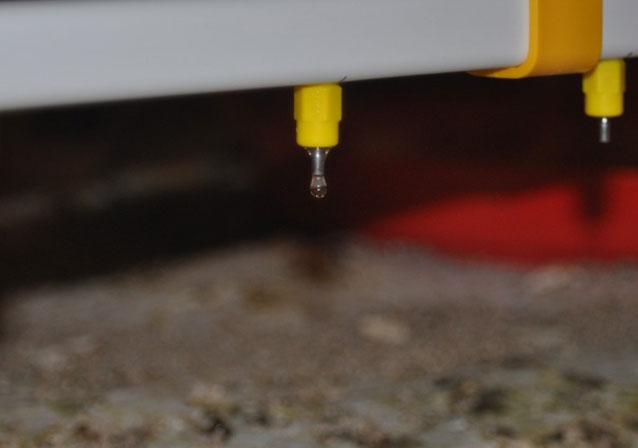
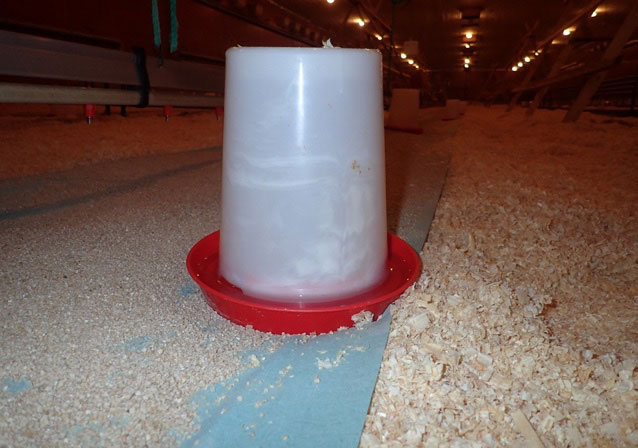
Guarantee enough fresh air, but no draughts. In conventional pancake brooders, use chick guards (i.e. new cardboard) to prevent drafts. Start with a diameter of approx. 2 m in cool weather and approx. 4 m in hot weather. Enlarge the ring every couple of days and remove by six or seven days of age.
Birds are housed at a higher stocking density during the first weeks. To ensure uniform pullet growth, it is important that the birds are moved into the empty cages at the appropriate time and with the correct cage density.
Cage wires should be covered with paper during the first week of life. Avoid covering the area directly under the drinking system, but cover the surrounding area. In cases where the wire size is too large for day old chicks. Use clean plastic matting to aid the chicks in reaching the drinkers.
Abundant feed should be provided in the feeders and additionally on the papers inside the cages before the chicks are housed to stimulate feed intake. When there is a feedchain inside the cage, fill this chain up to 100 % (Manual) to reduce mortality when you run the feedchain in the first day(s).
360-activated nipples in the brooding cages are preferred. If unavailable, provide cup drinkers during the first week. Reduce the water pressure on the nipples to make triggering the nipples easier and attract the chicks by the drop formation. flush the lines and cup drinker just before housing the chicks.
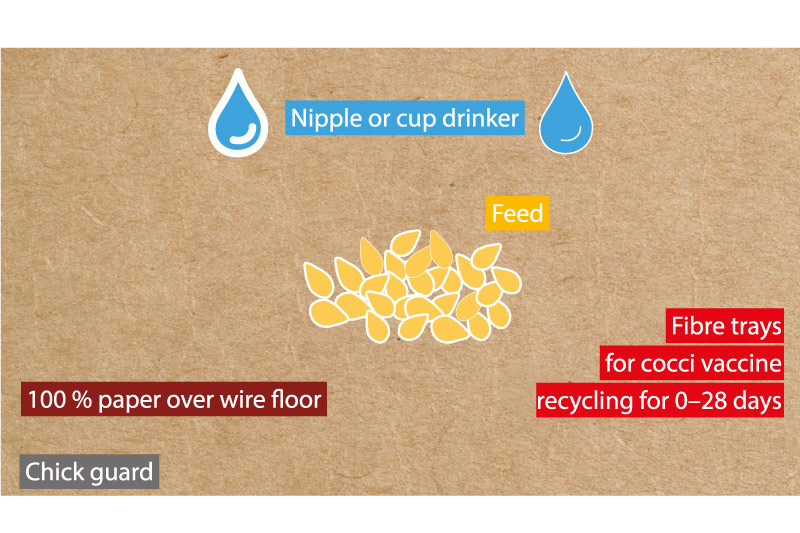
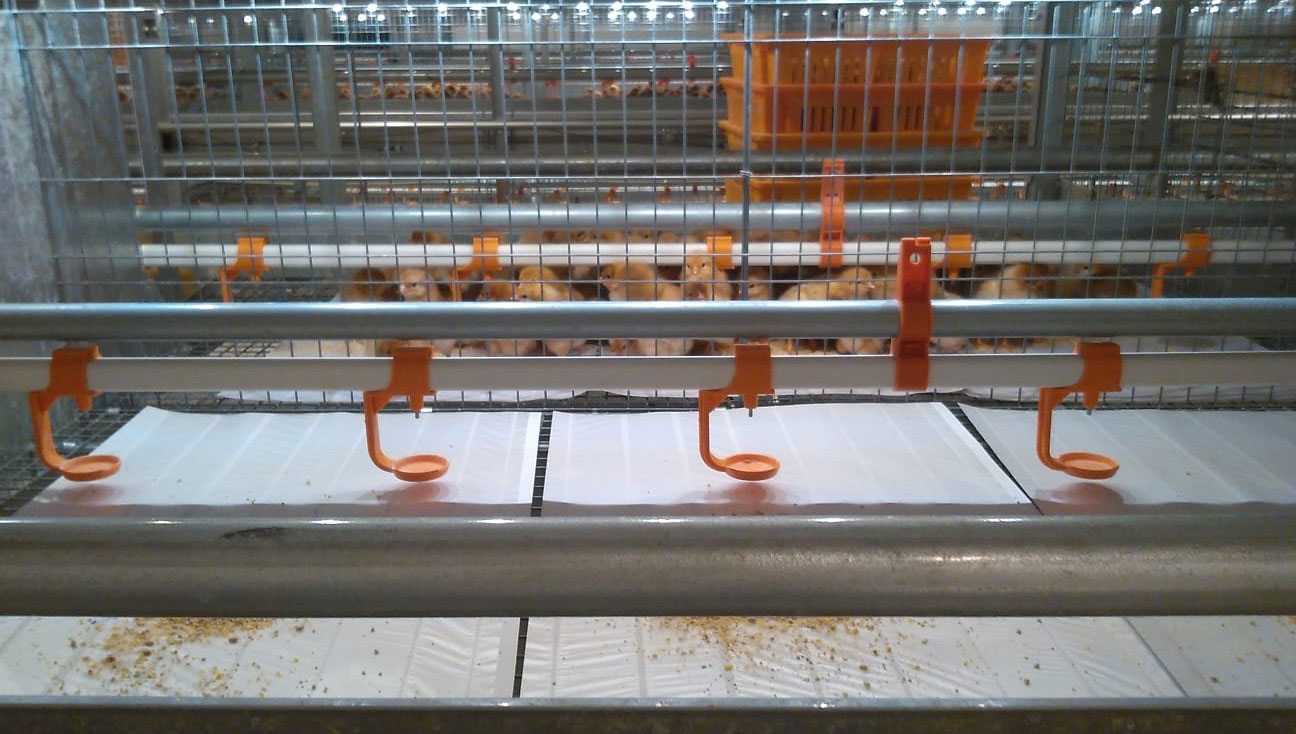
Transport can have a critical impact on oneday old chick quality. The correct temperature and ventilation levels should be guaranteed during transport. The transport time should be as short as possible. If transport exceeds more than 10 hours, the addition of a hydration product crates is recommended. For longer transport it is recommended to use temperature and humidity loggers
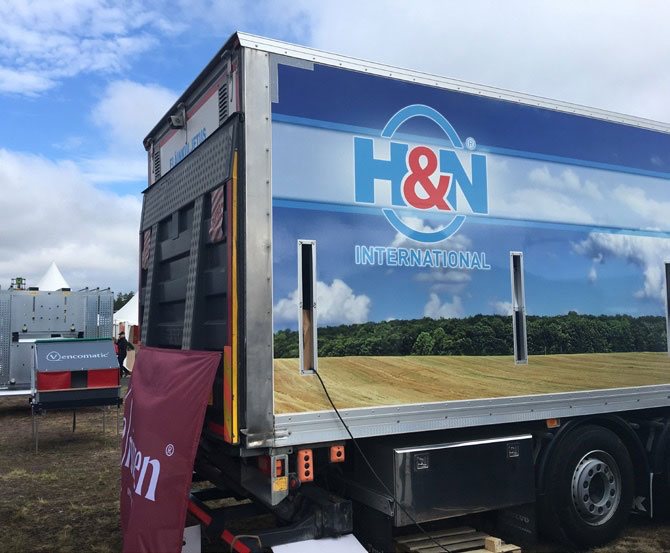
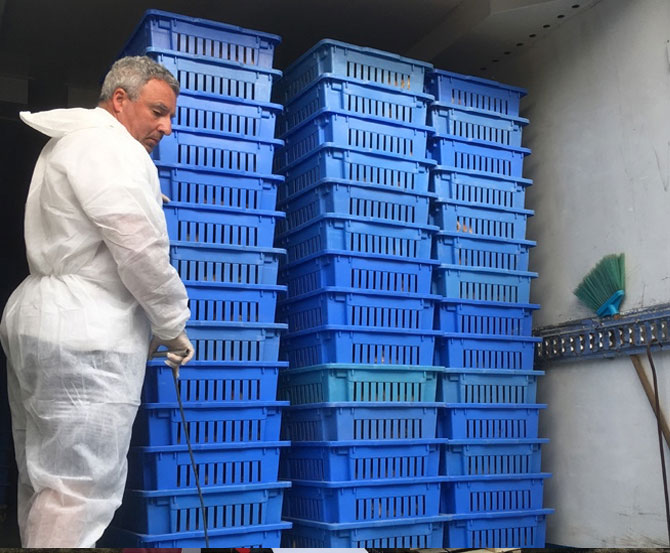
Place the birds gently but quickly into the house and provide immediate access to water and feed. Crates should be taken into the farm and distributed as soon as possible. Never store crates in conditions that are too hot or cold, windy or in direct sunlight. With floor brooding, place the chicks directly over the paper and feed. With cage brooding place the right number of chicks in each cage.
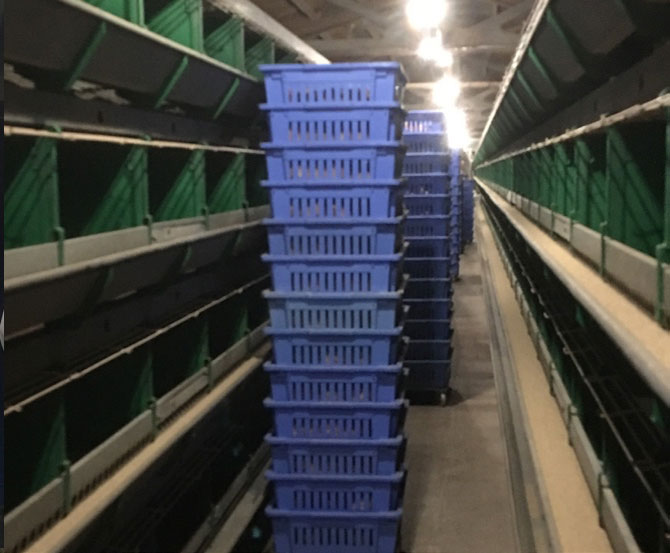
Thermograhic picture of crates while the birds are housed in cages 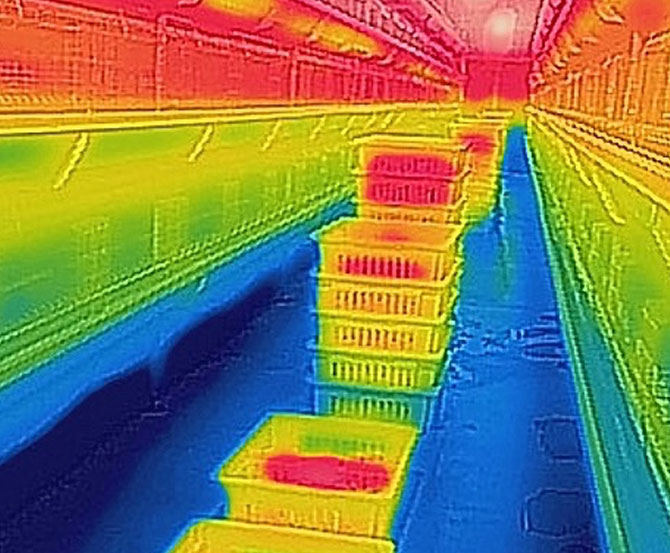
On arrival the chicks must be warm and active. Check that there is no abnormal mortality in the crates. The chicks’ bodyweight should be measured individually once housing has been completed. Check the body temperature as explained on page 14 and adjust the house temperature.Record the mortality at housing and inform the hatchery. Also inform them about the chick quality.

Welcome! Your admission is granted, please allow for 2 seconds as the door to our VIP room is opening for you right now! Please come in!
Don't have an account? Sign up now
